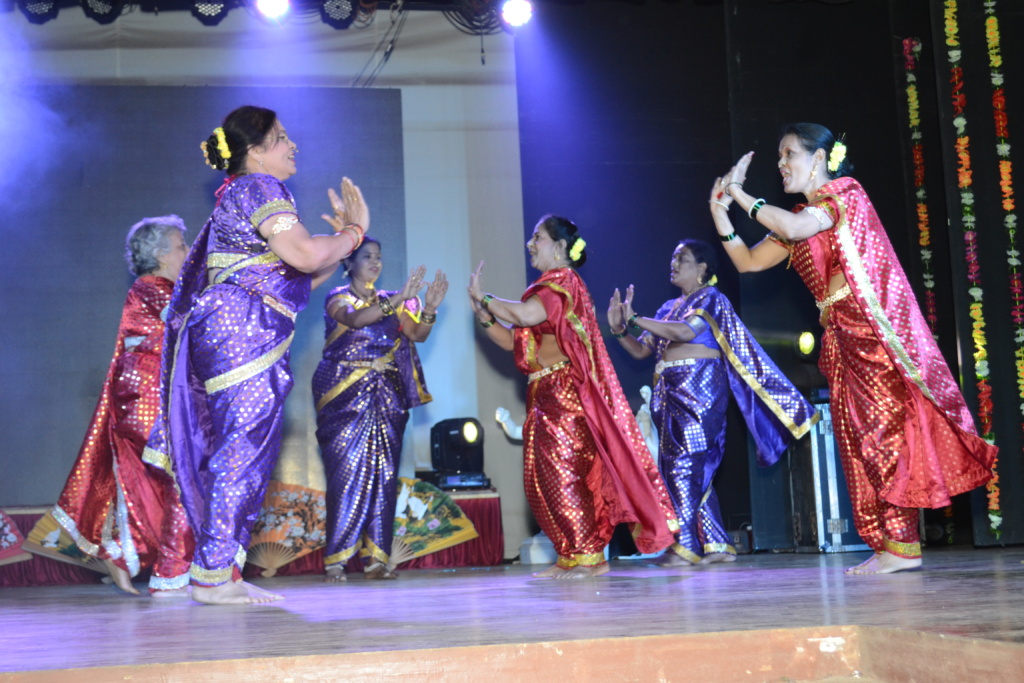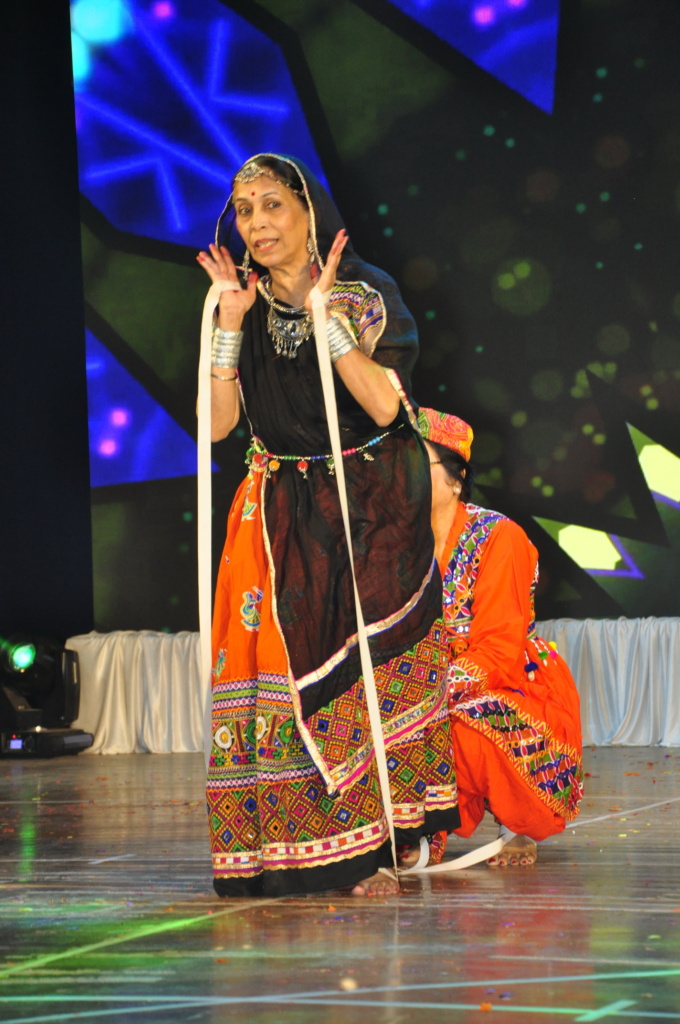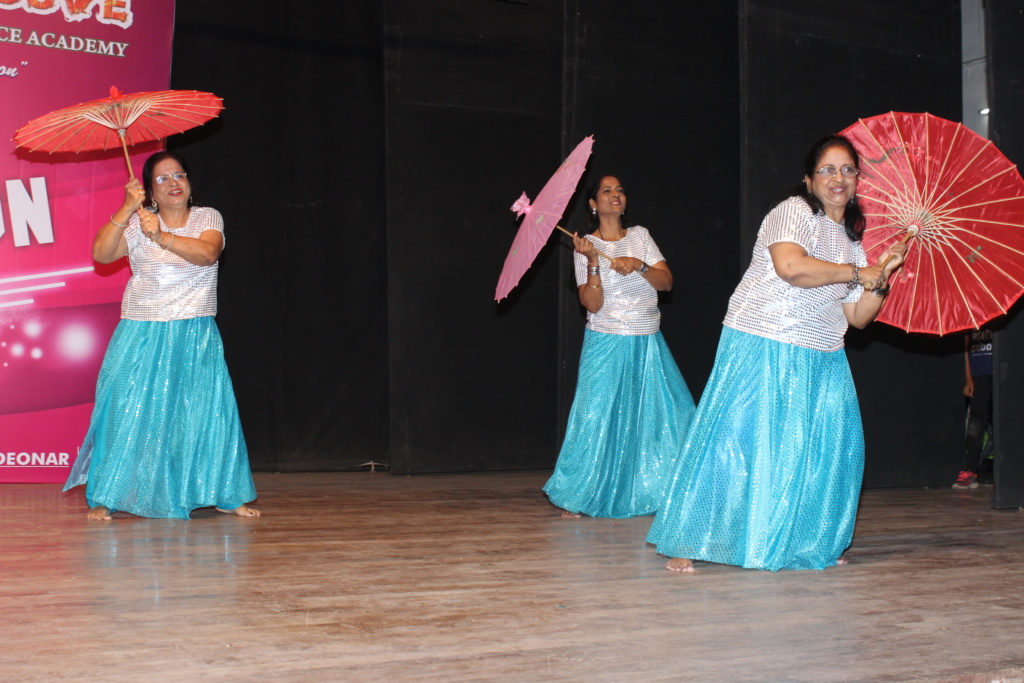Age is no bar for these enthusiastic women, who’ve helped themselves to a fresh start in their prime

First published: https://www.livemint.com/mint-lounge/features/so-you-think-you-can-t-dance-11578048738373.html
So you think you can’t dance?
A group of retired women in Mumbai are living a lifelong dream of learning how to dance
A year before she was due to retire from her banking job, Aruna Pai, now 63, set off on a little search of her own. The prospect of waking up to a morning when she would be sitting at home, uncertain about how the day would pan out, did not excite her. Mumbai-based Pai, whose husband had died a few years ago and whose two daughters were busy with their own lives, wondered what life had in store for her after 39 years of work. There was a sense of urgency—the few options that had emerged sounded unconvincing and she felt like time was running out.
The day of retirement arrived. Her girls were by her side to calm her nerves, yet Pai couldn’t help but break down. “I felt really empty and wondered what I would do the next day. I thought I would sink into depression repeating the same household chores every day,” Pai recalls.
It was then that she had a chat with her friend, Veena Iyer, 70. The sprightly neighbour from Chembur laughed off her concerns and asked her to accompany her to a dance class she had been attending in Nerul since 2014.
Later that week, Pai found herself amid a bubbly bunch of seniors, who chuckled when she voiced her concern about having two left feet.
“I didn’t know anything about dance and wondered if they would even accept me in the class. But when I walked out that day, I knew I would be happy to give it a shot,” Pai says.

At the dance session, she found a number of senior citizens like her, who had had fast-paced jobs and chased successful careers and were now looking to address the post-retirement void in their lives by reinventing themselves.
Iyer, for instance, had initially joined a senior citizens’ group where she was happy to meet new people. But she didn’t see potential for growth in activities such as the odd game of Housie and lectures on old age by professionals. A few others, like Jyoti Keswani , 65, who met Pai and Iyer through the same dance class, had tried teaching underprivileged children as social service, but was still dissatisfied.
“I volunteered with an organization that worked with terminally ill children. It was great to fulfil the wishes of these kids, but at the end of the day, it was all very depressing and I couldn’t sleep at night. Besides, I realized I was doing nothing for my own growth,” Keswani says.
The attendees of the first dance class organized in 2014 by MyRetiredLife Foundation—a trust co-founded by R.K. Rao and Saurav Das for senior citizens—found it life-changing. Dance emerged as an avenue to express themselves and meet others who shared their passion.
One of the activities there was an aerobics session led by dance instructor Vilas Patil, 29. He had recently quit a regular job and was figuring out his next move when a friend mentioned the trust. It didn’t pay much, but the lack of work and the proximity to his home convinced him to take on the role.
“The idea was to keep them active through aerobics,” he says of his first batch. There were about 50 seniors in that group, some of whom were barely able to walk. The session would last an hour but after each break, I would find fewer people coming back. By the end of it, there would be five-odd participants left. But what I realized was that they really wanted to learn and I was quite comfortable working with them,” Patil says.
“Dance has been an integral part of my life and I was keen on introducing it to the seniors. I thought the best medicine you can give your body is motivation and when I saw them taking fewer breaks over the next sessions, I knew they were ready to try something new,” he adds.
Six months later, Patil led the first dance session that lit up to Bollywood medleys from the 1960s and 1970s to establish a connect with his students. The movements were restricted to an imaginary box on the ground—slow and swaying, with minimal actions largely using the hands. Patil then got down to deconstructing the concept of beats to get their bodies in sync with the music. Over the next few days, his students stepped out of their shells, as dance sparked a little magic in each one of them.
Women like Shikha Arora, 64, could hardly believe they were getting a chance to dance. Born in a Bengali family, Arora’s first real brush with dance had been during her wedding in 1974, when she peeped out of the window to see her future husband’s Punjabi family letting loose at the baraat.
“I was in half a mind to go join them—the men were really good, the women so graceful. The energy was infectious but my mother was having none of it. Ever since, I harboured secret ambitions of learning how to dance,” Arora says. But just four months after tying the knot, she took up a job as a maths and science teacher—and her dream was forgotten. Others like Keswani had grown up hearing “sharif ladkiyan payal nahin pehenti (girls from good homes don’t dance)“—she never thought she would have the opportunity to learn how to dance, let alone after retirement.

“On the first day, I stood at the back of the class, frozen, to hide behind the others. I am still very conscious when I am at the front, though it’s much better today,” Keswani says. With each class, the mind and body loosened up.
The challenges, though, were different for Patil, who had only worked with younger students in the past. Each time he choreographed a dance, he had to keep a backup for possibly tricky steps, in case his students found it too difficult. The seniors sometimes found it hard to remember the steps, until they realized that the key was memorizing the lyrics beforehand.
“I would download the song and google the words. There was no scope of making a mistake then,” Arora says.
“Over time, I realized that it wasn’t just physical exercise. It also kept the brain active since you need to remember the words as well as the next step,” Iyer adds.
While most other sessions on wellness or setting up one’s own business saw average attendance, the Dance Wednesdays conducted by MyRetiredLife Foundation registered a full house. The first opportunity to perform at a public event arrived in 2015 as part of the World Elders’ Day celebrations at the HR College of Commerce & Economics in Mumbai. They were nervous, but the experience proved to be exhilarating.
This was reason enough for Patil to start private dance classes thrice a week for different batches at the Rising Groove Dance Academy, much to the delight of his students.“I found my confidence and agility through dance. And it gave me immense joy,” Iyer says.
Over the next few months, the bonds grew stronger. Other friends, who rarely got out of their homes, joined the class, and the numbers rose to about 20 for each session. Back home, Keswani’s granddaughter proudly told her friends that her grandmother was going to dance class and played teacher each time she had to rehearse. At public gatherings and in their circles, they became mini celebrities just because they dance.
Patil introduced them to everything from classical dance forms to Bollywood and hip hop. The enthusiasm to learn meant language didn’t matter—whether it was Pinga in Marathi or the Tamil song Soi Soi; nor did the challenge of performing folk dances such as giddha from Punjab and bihu from Assam. Patil kept the targets small and achievable, yet chose not to teach further until they had mastered the moves, insisting that each one practise at home. Morning walks soon began to feature the occasional jig, and songs rose above the kitchen clatter.
“We all have some small issue or the other. But then even youngsters these days are not 100% fit. Our sir takes all these limitations into account while choreographing for us,” Iyer says.
As word spread, institutions and organizations, even corporate houses, began inviting them to perform. Costumes would be hired and extra rehearsals organized at Arora’s home.
“He (Arora’s husband) knew I always wanted to learn dance and was very supportive when I started attending classes, even on days when I would return post 9pm. And he proudly told his friends what I was up to on each occasion,” Arora says.
Group members help each other out in other ways. Iyer, who retired as IT manager for a bank, has taught some of them modern tools like netbanking; Keswani solves their insurance queries. When Patil moved the class to his studio in Lalbaug, Arora was in a dilemma—she had never travelled by train before.
“But my new friends dragged me along and today I am an expert at commuting by local trains in Mumbai,” Arora says.
The dancing stint inspired Iyer to study for a movement therapy diploma at the age of 66—today, she conducts sessions for seniors and children with special needs.
“Dance is freedom, it’s expression. Everybody is not talkative, but dance speaks for our feelings. And you feel very nice and happy after dancing,” Iyer says.
“I have often heard people say you are senior citizens, so stick to the bhajans and yoga. Of course, they have little to say after they see how confident we have become. The best part is that I don’t have to be great at dance because I am doing it only for myself,” she adds.
This month, the group is gearing up for its biggest challenge yet. When someone at the Tata Institute of Social Sciences heard of their passion for dance, he sent them an official invite to perform a traditional dance form lasting 15 minutes.
Keswani considers herself a slow learner and hopes to spend extra hours practising on her own in front of the mirror. Arora, on the other hand, can’t wait to hit the stage.
“If you tell them that they will be performing in front of 10,000 people, there will be a few raised eyebrows at first, but they will soon get down to gearing up for the challenge. That’s the level of focus and confidence that they have developed today,” Patil says.
Pai now follows a weekly schedule that keeps her on her toes. She spends four days visiting her 90-year-old mother-in-law in Vashi to play memory games and keep her active. The weekends are busy with dance sessions, walkathons and the occasional volunteering stint.
It has led to a few complaints from her daughters.
“Back in the day when I had a job, the girls would visit me on a Saturday or Sunday when we all had time off work. Things may be the same for them, but it’s the busiest time of the week for me these days,” Pai says.